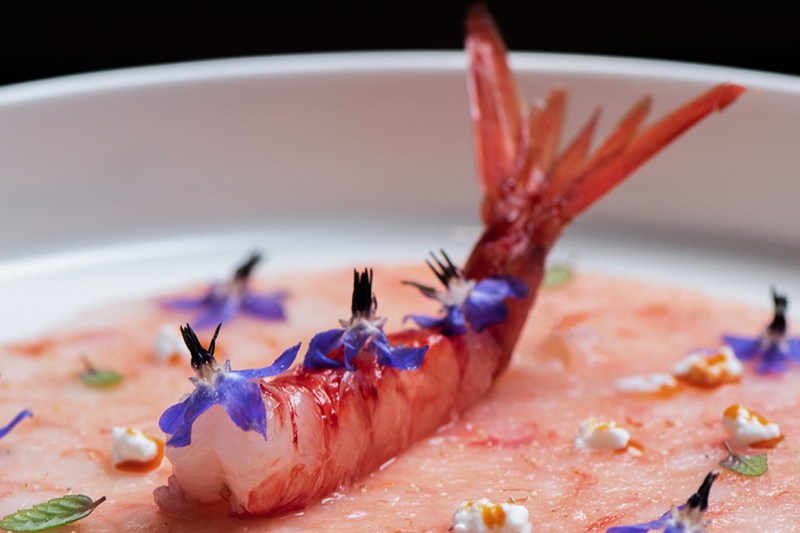
From shrimp scampi to poached in a flavorful stock, shrimp (or prawns) are some of the most popular seafood in America. Shrimp is also beloved worldwide, from Chinese stir-fried shrimp to Latin American-style ceviche, this shellfish has a global reach. When it comes to cooking this delicious crustacean, there are plenty of options regarding shrimp dishes, and while some might think most shrimp are the same, there is a lot more to this shellfish than meets the eye. Simply put, there are more varieties of delicious shrimp than tiger prawns or plainly labeled “medium” shrimp at your local supermarket.
At Citarella NYC, a gourmet market and seafood specialist, owner and fishmonger Joe Gurrera is excited to expand the American shrimp exposure by introducing some new varieties of rare, gourmet shrimp: Madagascar organic shrimp and Gambero Rosso (red prawns) from Sicily. From shrimp preparation to shrimp dinner ideas, Gurrera is here to provide expert commentary on why these prawns are so special.

Madagascar organic shrimp
These large, blueish-hued shrimp originate from northeastern Madagascar. “We source it from the OSO brand of sustainable and responsible seafood,” explains Gurrera. “Guaranteeing the farming conditions are officially certified according to French Organic (Agriculture Biologique) rules.”
This careful attention to detail for sourcing is due to Gurrera’s passion for seafood sourcing. At Citarella, these Madagascar shrimp are labeled organic, which means no chemicals, hormones, or antibiotics are used.
How to clean shrimp
Before consuming these shrimp, it’s essential to clean them first. While some shrimp bought in the grocery store will be cleaned, many are not.
- To clean, first use a sharp knife and run the blade along the backs of each shrimp, cutting into the shell (you’ll want to avoid cutting too deep — aim for about 1/4 deep into the flesh of the prawn).
- Then, using the same knife, cut down the shrimp about 3/4 of the way. Opening up the shrimp means you’ll see a long black vein — this should be removed.
- Once that’s complete, remove the shell, and while pinching the tail, pull the attached shell still on the tail to remove this final bit.
- Finally, gently rinse the shrimp in some cold water.
Madagascar shrimp cooking tips
At about ten shrimp per pound, the large size of Madagascar shrimp is great for an endless number of shrimp dishes. When cooked, these blue-tinged shrimp turn pleasantly red-orange and are absolutely delicious, often described as having a nutty and sweet flavor. Because of this, Madagascar shrimp can be used for a large range of shrimp dinner ideas and equally delicious thrown on the grill or in a savory seafood pasta. One key thing to remember specifically for Madagascar shrimp is its one-of-a-kind texture.
“Due to their flavor and langoustine-like texture, the organic Madagascar shrimp is ideal for grilling or sautéing,” said Gurrera. “You can also have them steamed for a shrimp cocktail.”
Currently, Citarella is selling Madagascar shrimp on its website, priced at $154.00 for 4.4 pounds (10 pieces per pound).

Gambero Rosso (red prawns)
A beautifully vibrant rouge, the Gambero Rosso is a show-stopping seafood item and a rare find anywhere in America. Simply put, you won’t find these prawns shrink-wrapped in Styrofoam at your local supermarket. Caught in the pristine Mediterranean waters around Sicily, Gurrera has a deep personal connection to this symbol of Southern Italian cuisine.
“We source it from Mazara di Vallo,” explains Gurrera. “I’m from Sciacca, which is only 20 minutes away from Mazara di Vallo. As a child, my family and I traveled to the region where Citarella sources the Gambero Rosso.”
While the color of these prawns might be a bright, blood red, the flavor profile is sweet and tender. Or, as Gurrera describes them, “they are the Nantucket Bay Scallops of Shrimp.” So, how to make these rare, red-colored shrimp? Because the flavor of these Mediterranean shrimp lean towards a sweeter profile, showcasing that natural freshness is key. “I’d recommend enjoying them as a tartare, crudo, or as a part of a seafood tower,” said Gurrera.
For Gurrera, his two favorite ways of preparing raw Gambero Rosso include making the seafood into a tartare or carpaccio.
How to prepare a tartare
- For the tartare, Gurrera first peels and deveins the shrimp.
- Then, he rinses them gently with cold water before patting them dry with a clean towel.
- Once that’s complete, he chops them into small pieces, places them in a bowl, and dresses the shrimp with good quality extra virgin olive oil and sea salt.
- For presentation, Gurrera likes to use a ramekin or mold to create cakes before garnishing the finished tartare with bean sprouts or microgreens.
How to prepare a carpaccio
For a carpaccio, preparation is essentially the same except for a few key details.
- While both preparations require a similar cleaning process, for the carpaccio, once the prawns are cleaned, place them between two sheets of plastic wrap and gently pound them until flattened.
- Once complete, transfer this thinly pounded shellfish to a plate and season with extra virgin olive oil and sea salt.
- Finally, garnish the carpaccio with a whole shrimp and microgreens.
Currently, Citarella is selling gambero rosso shrimp for $59 per pound (18-20 shrimp per pound).



